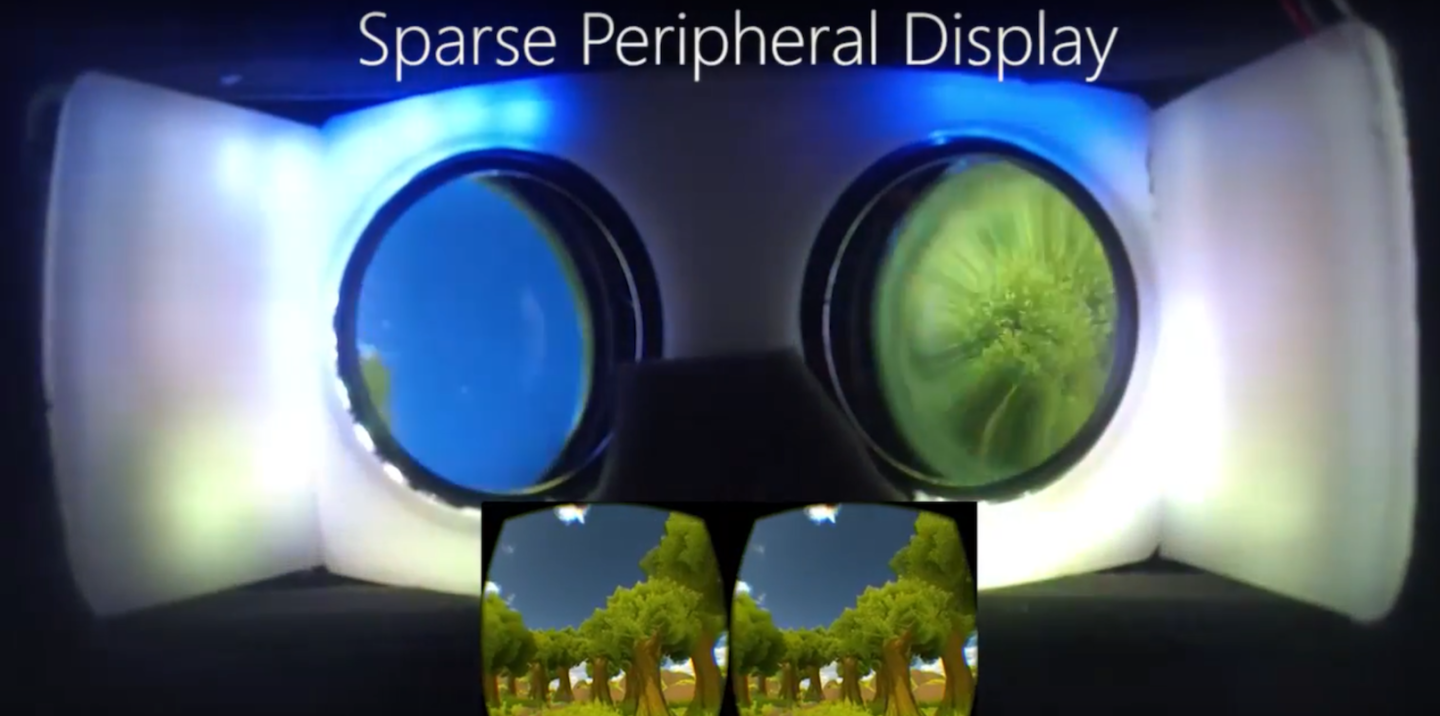It's been a long time coming, but after a few false starts it appears the age of virtual reality may finally be upon us, with the HTC Vive, Samsung Gear VR and Oculus Rift vying to immerse consumers in virtual environments. But even before the current crop of headsets can gain a serious foothold, a team at Microsoft Research has apparently discovered a simple and inexpensive way to improve the VR experience, by expanding the user's field of view with an array of LEDs.
Most consumer VR headsets have a field of view around 100 degrees, but the Microsoft Research team points out this is much narrower than the more then 180 degrees of the human visual field. According to the researchers, that makes VR akin to looking through binoculars, reducing the immersive effects of the technology.
Tosolve the problem, Microsoft Research has created what it calls aSparse Peripheral Display and integrated it into both a virtual reality headset and an augmented reality headset.
The former, dubbed the SparseLightVR, is built upon an Oculus Rift DK2 Prototype and uses an array of 70 LEDs placed around the outer edges of the eye displays to create a 170-degree field of view. The augmented reality version, called SparseLightAR, is built upon acustom modified Gear VR prototype and uses 112 peripheral LEDs to create a 190 degree fieldof view.

Although they might not be able to convey nearly as much detail as the main headset displays, the team says they provide enough additional contextual information to increase the wearer's situational awareness and make the VR experience more immersive, while also reducing virtual reality sickness symptoms.
To render the color of the LEDs, and make sure they are true to the experience you're getting on screen, the team created a series of light probes that can be deployed in any scene using the Unity game engine.
In tests where people were forced to find an object within a scene, the testers using the SparseLightVR system were much faster tracking down the object than those using a standard, narrower field of view.
Additionally, when SparseLightVR was coupled with a system that creates a motion effect in the user's periphery to try and combat the effects of virtual reality sickness, 11 of the 14 testers reported a reduction in the motion sickness-like symptoms common to VR users.
The Microsoft Research team recently presented a paper on the SparseLight technology at ACM CHI 2016 and a video explaining it can be viewed below.
Source: Microsoft Research via YouTube.










